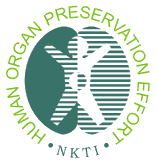The Human Organ Preservation Effort is a non-profit organization in the
Philippines under the umbrella of the National Kidney & Transplant Institute,
dedicated to the legal procurement of donor organs for transplantation to patients
afflicted with various types of end-stage organ disease. The effort concentrates mostly on
donors who have been declared brain dead with otherwise normal organs.
There are two types of donors, the living-related donor and the cadaver donor. The
living-related donor (LRD) is a blood relative of the patient who willingly donates one of
his or her organs without any corresponding danger to the donor's life or any alteration
in his usual physical activities. Organs that can be donated through the LRD route are one
kidney, bone marrow and part of the liver if the recipient is a child.
The cadaver donor (CAD) is someone who is unrelated to the patient who nsuffered injury
by trauma or disease to the brain, destroying the upper brain functions (which house a
person's personality and stock of knowledge, and for all intents and purposes, his very
being) leaving the brain stem or vegetative functions (which involuntarily control a
person's breathing, heart, and other life-sustaining functions) intact.
Before a patient becomes a cadaver donor he or she has to be certified as brain dead.
In the past, death was defined as stoppage of the heart. Presently, the old definition
still holds true, however in some cases a person is considered dead even if he or she is
still breathing with the heart beating. These brain dead cases are usually caused by
trauma to the brain (via gunshot, blunt injury, vehicular injury, etc.). In the
Philippines, certification of brain death requires the certification of a neurologist or
neurosurgeon supported by imaging studies (Xrays, CT Scan or MRI) and
electroencephalography (EEG). Since the donor is considered dead, organs that can be
harvested include both kidneys, bone marrow, long bones, corneas, the whole liver,
pancreas, lungs and heart.
However, before a cadaver donor's organs are harvested, there must be a signed consent
of the nearest-of-kin or via a last will and testament. In the former, especially in cases
of sudden trauma, it is the difficult job of HOPE's transplant coordinators to discuss the
option of organ donation with the relatives in this time of grief. Only with a signed
consent can a patient be harvested for organ donation. In several countries abroad,
especially in Singapore, Spain and now Denmark, the system is that unless the donor has
previously signified his REFUSAL to donate, his organs can be harvested. In the
Philippines, the reverse is true, only if the donor has agreed beforehand or if the
relatives have agreed to consent can his organs be harvested.
Because of the Philippines' deep family ties, religious devotion and
superstitious/traditional beliefs, the number of cadaver harvests is dismally low. To help
relatives make the decision to donate, the Organ Donor Card
project was started. Although not the equivalent of a legal consent document at the
present time, it can help the relatives realize that the donor has consented beforehand
and that his wishes be respected.
Cadaver Organ Donation in the Philippines is still in its infancy even though it was
started way back in 1983 because of budgetary constraints. However this does not daunt the
people of HOPE to do the best they can.

![]()
